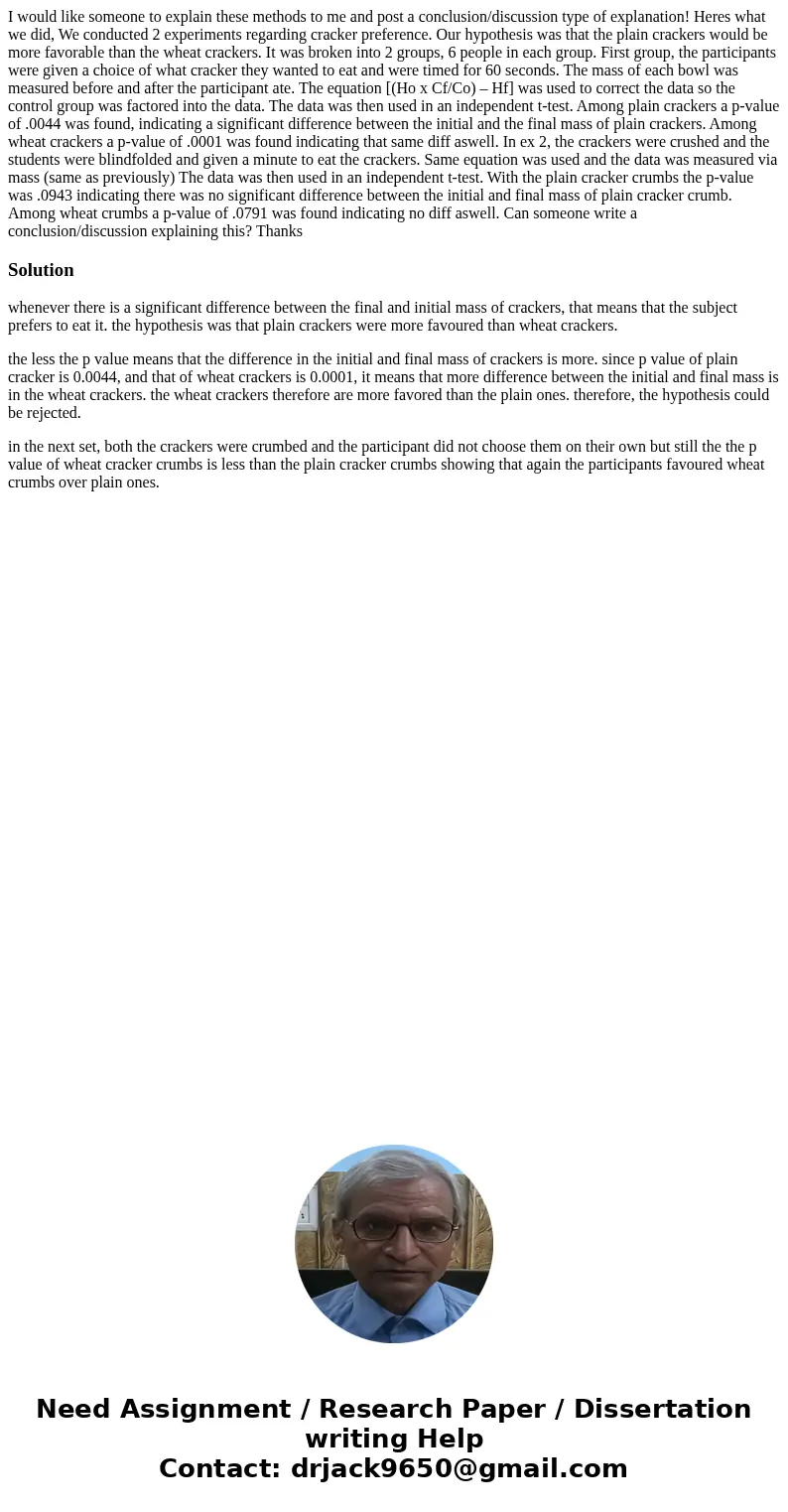I would like someone to explain these methods to me and post
I would like someone to explain these methods to me and post a conclusion/discussion type of explanation! Heres what we did, We conducted 2 experiments regarding cracker preference. Our hypothesis was that the plain crackers would be more favorable than the wheat crackers. It was broken into 2 groups, 6 people in each group. First group, the participants were given a choice of what cracker they wanted to eat and were timed for 60 seconds. The mass of each bowl was measured before and after the participant ate. The equation [(Ho x Cf/Co) – Hf] was used to correct the data so the control group was factored into the data. The data was then used in an independent t-test. Among plain crackers a p-value of .0044 was found, indicating a significant difference between the initial and the final mass of plain crackers. Among wheat crackers a p-value of .0001 was found indicating that same diff aswell. In ex 2, the crackers were crushed and the students were blindfolded and given a minute to eat the crackers. Same equation was used and the data was measured via mass (same as previously) The data was then used in an independent t-test. With the plain cracker crumbs the p-value was .0943 indicating there was no significant difference between the initial and final mass of plain cracker crumb. Among wheat crumbs a p-value of .0791 was found indicating no diff aswell. Can someone write a conclusion/discussion explaining this? Thanks
Solution
whenever there is a significant difference between the final and initial mass of crackers, that means that the subject prefers to eat it. the hypothesis was that plain crackers were more favoured than wheat crackers.
the less the p value means that the difference in the initial and final mass of crackers is more. since p value of plain cracker is 0.0044, and that of wheat crackers is 0.0001, it means that more difference between the initial and final mass is in the wheat crackers. the wheat crackers therefore are more favored than the plain ones. therefore, the hypothesis could be rejected.
in the next set, both the crackers were crumbed and the participant did not choose them on their own but still the the p value of wheat cracker crumbs is less than the plain cracker crumbs showing that again the participants favoured wheat crumbs over plain ones.

 Homework Sourse
Homework Sourse